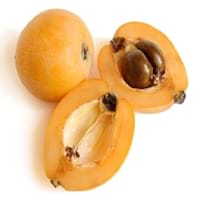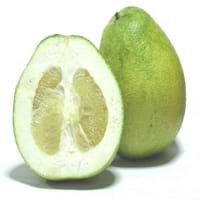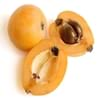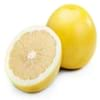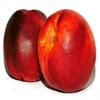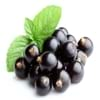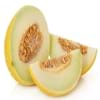Health Benefits
Cancer prevention, Heart care, Reduces nervous tension, Reduces blood circulation problems, Reduces stress, Regulation of heart rate, Strengthening of bones
Cancer prevention, Heart care, Prevents Urinary Tract Infection
General Benefits
Anti-inflammatory properties, Controls blood pressure, Digestive aid, Eye care, Helps in weight loss, Improves eye vision, Maintains healthy cholesterol level, Strengthens bones
Digestive aid, Fights against infections, Flu treatment, Healing of wounds, Helps in weight loss, Treatment of common cold
Skin Benefits
Anti-aging benefits, Reduces wrinkles, Treatment of dark spots, Treatment of skin diseases
Anti-aging benefits, Brightens and lightens complexion
Hair Benefits
Protects hair
Promotes longer and healthier hair, Protects hair
Allergy Symptoms
Diarrhea, Itching of mouth, Nasal congestion, Sneezing, Swelling of face, Watery eyes
Abdominal cramps, Abdominal pains, Diarrhea, Lightheadedness, Nasal congestion, Nausea, Swallowing difficulties, Swelling of mouth, tongue or lips, Vomiting
Side Effects
Allergic reaction
Allergic reaction, Dizziness, Stomach pain
Best Time to Eat
Along with meal, As a snack in the late afternoon, Don't consume at night and before bed, Morning time (before lunch)
As a snack in the late afternoon, Don't consume at night and before bed, Eat the fresh ones, avoid mixing with any other foods, don't eat after meal., Morning time (before lunch)
Vitamin A (Retinol)
Not Available
Vitamin B9 (Folic acid)
Not Available
Vitamin C (Ascorbic Acid)
Not Available
Phytosterol
Not Available
Calories in Fresh Fruit with Peel
Calories in Fresh Fruit without Peel
Not Available
Not Available
Calories in Frozen Form
Not Available
Not Available
Calories in Dried Form
Not Available
Calories in Canned Form
Not Available
Calories in Juice
Not Available
Calories in Pie
Not Available
Type
Tree fruit, Tropical
Citrus, Tropical
Season
Winter
All seasons
Varieties
Ahdar, Ahmar, Asfar, Blush, Champagne, Early Red, Eulalia, Fire Ball, Golden Red, Golden Yellow, Oliver, Thales, Thames Pride, Victor and Wolfe
Chandler, Cocktail, Cuban Shaddock, Hirado Buntan, Honey, Jaffa Red, Mato Buntan, Pomelit, Reinking, Siamese Sweet and Sweetie
Color
Orange, Yellow
Green, Pink, Red, Yellow
Inside Color
Orange
Creamy Yellow
Taste
Sweet, Tart
Juicy, Sweet
Origin
China
Malaysia, South-Eastern Asia, Thailand
Soil Type
Clay, Loam, Sand, Well-drained
Clay, Loam, Sandy
Climatic Conditions
Warm to hot climate
Warm
Facts about
- Loquats are used in plum wine manufacturing.
- Dried leaves of loquat are used to make herbal tea.
- The seeds of loquat are slightly toxic & the symptoms of intoxication are nausea, vomiting & shortness of breath.
- Flowers of pomelo fruit are used to make perfumes.
- Pomelo tree wood is used for the manufacture of tool handles.
- Life of pomelo tree is around 10 years.
- Height of pomelo can be 15-20 feet.
Other Countries
Brazil, Chile, China, Egypt, Israel, Italy, Morocco, Pakistan, Portugal, Spain, Turkey
Argentina, India, Israel, Mexico, South Africa, Sudan, Thailand, Turkey, United States of America
Top Importer
China
Europe
Top Exporter
Spain
United States of America
Botanical Name
Eriobotrya japonica
Citrus maxima
Synonym
Crataegus bibas or Mespilus japonica or Photinia japonica
Citrus grandis
Subkingdom
Tracheobionta
Tracheobionta
Division
Magnoliophyta
Magnoliophyta
Class
Magnoliopsida
Magnoliopsida
Species
E. japonica
C. maxima
Generic Group
Rose
Citrus fruit
Difference Between Loquat and Pomelo
We might think that Loquat and Pomelo are similar with respect to nutritional value and health benefits. But the nutrient content of both fruits is different. Loquat and Pomelo Facts such as their taste, shape, color, and size are also distinct. The difference between Loquat and Pomelo is explained here.
The amount of calories in 100 gm of fresh Loquat and Pomelo with peel is 47.00 kcal and 38.00 kcal and the amount of calories without peel is Not Available and Not Available respectively. Thus, Loquat and Pomelo belong to Low Calorie Fruits and Low Calorie Fruits category.These fruits might or might not differ with respect to their scientific classification. The order of Loquat and Pomelo is Rosales and Sapindales respectively. Loquat belongs to Rosaceae family and Pomelo belongs to Rutaceae family. Loquat belongs to Eriobotrya genus of E. japonica species and Pomelo belongs to Citrus genus of C. maxima species. Beings plants, both fruits belong to Plantae Kingdom.
